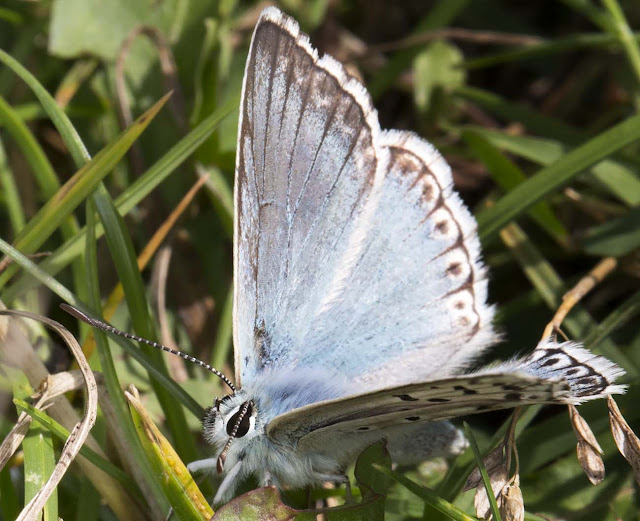 |
| Chalkhill Blue, Polyommatus coridon. Hutchinson's Bank, 29 July 2015. |
This was the photo I was second most pleased with on Hutchinson's Bank. The Chalkhill Blue is not a common species. It's not the rarest butterfly to be found here - that would be the Small Blue - but it was still nice to see one.
The photo I was most pleased with was a hoverfly.
 |
| Volucella zonaria. Hutchinson's Bank, 21 July 2015. |
I have been trying to capture on of these for a couple of years, and they have just zoomed past. This time I found one feeding on a Bramble flower. Volucella zonaria is a large hoverfly, a hornet mimic, looking dangerous but actually completely harmless to people.
I captured some other hoverfly photos too.
 |
| Volucella pellucens. Hutchinson's Bank, 21 July 2015. |
This is Volucella pellucens, also on a Bramble. I love photographing hoverflies, They are colourful and varied.
 |
| Dronefly, Eristalis pertinax. Hutchinson's Bank, 29 July 2015. |
I have lots of photos of this hoverfly, Eristalis pertinax, but this was an interesting angle. It's eating pollen from a Hogweed.
 |
| Large White, Pieris brassicae, on Creeping Thistle, Cirsium arvense. Hutchinson's Bank, 21 July 2015. |
Back to the butterflies .. This Large White, aka Cabbage White because its caterpillars love Brassicas, is feeding on a Creeping Thistle, our commonest thistle, which will grow in any scrap of waste ground. It has a paler flower than most thistles, and they smell of honey.
 |
| Common Red Soldier Beetle, Rhagonycha fulva. Hutchinson's Bank, 29 July 2015. |
There are plenty of other insects, too. This is the commonest beetle (visible beetle, I should probably say) at this time of year. It's often called the Hogweed Bonking Beetle because this is how you commonly see it, and it loves Hogweed. I suppose it must eat sometime or other, as well.






There are some webs of Glanville Fritillary larvae along the cutting just before the seat on the left bank side, near to where the Chalkhill Blues have been breeding.
ReplyDeleteThanks. Both interesting and surprising!
Delete